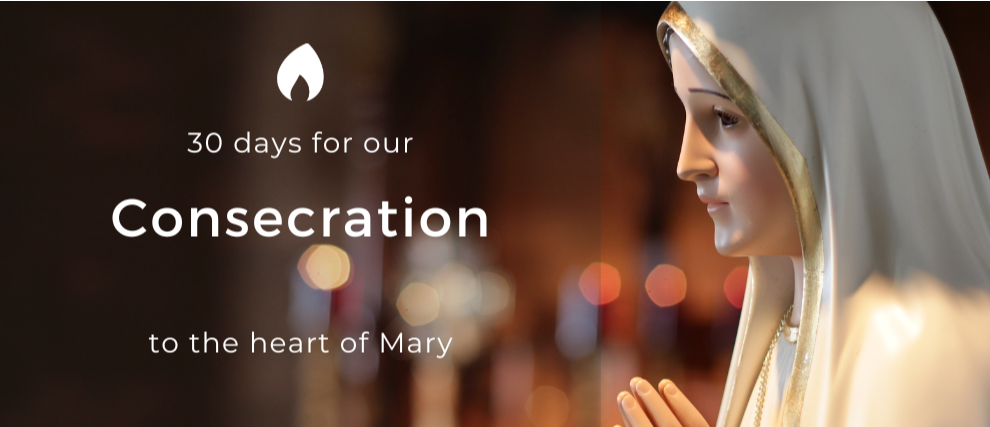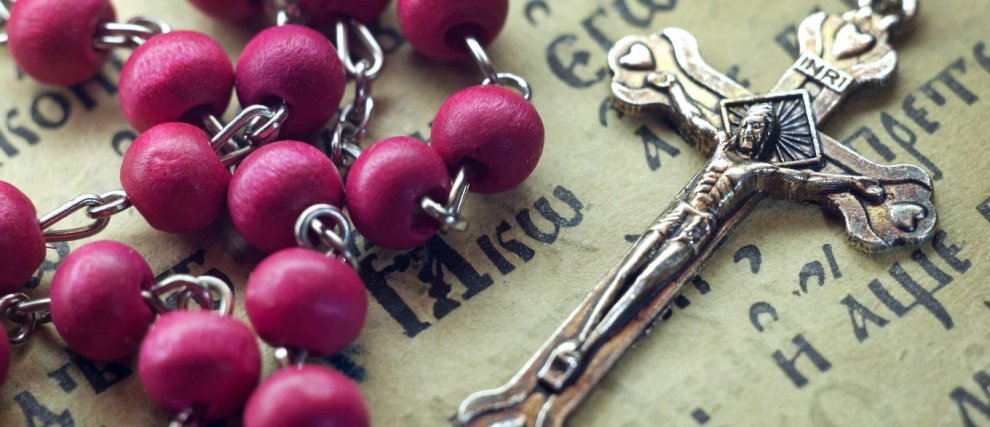Devotion of The Divine Mercy
The Divine Mercy Devotion is based on the teachings and requests made by Jesus Christ to St. Faustina. St. Faustina was not only the secretary but the Apostle of Divine Mercy as Jesus asked that it be her mission in life to make known the importance of the Divine Mercy Devotion. The Catholic Church has many devotions but this isn’t just a devotion, it’s also a message. It is a devotion completely centered on Christ and His infinite mercy for all of us. It also reflects Chrit’s message in the Gospel of following the Commandments. Her exchanges with Jesus and His demands were written down in what is known today as The Diary of St. Faustina. Here St. Faustina tells us how we can receive and help spread Jesus’ mercy in order to save souls. The Novena of Divine Mercy is one of the best ways.
The Core of the Divine Mercy Devotion
The Devotion of Divine Mercy is based upon two principles: Trust and Mercy.
Trust is essential to the devotion and without it the devotion cannot exist. Jesus told St. Faustina that “Jesus, I trust in You” should be written on the bottom of the Image. It is the attitude of a child who trusts their parents with abandon. It is the attitude we should have towards God. “The more a soul trusts, the more it will receive. Souls that trust boundlessly are a great comfort to Me, because I pour all the treasures of My graces into them. I rejoice that they ask for much, because it is my desire to give much, very much.” (Diary entry 1578)
Mercy is how we should be with ourselves and especially our neighbours. Jesus tells St. Faustina that there are three ways to show mercy: first by action, second by word and third by prayer. As Jesus told His Apostles, “Love one another as I have loved you”. We need to ask God for His mercy, be merciful to others and completely trust in God’s mercy. “You are to show mercy to your neighbours always and everywhere. You must not shrink from this or try to excuse or absolve yourself from it.” (Diary entry 742) “Know that My Heart is mercy itself. From this sea of mercy, graces flow out upon the whole world. […] I desire that your heart be an abiding place of My mercy.” (Diary entry 1777)
Who Is Saint Faustina?
St. Faustina (Helen Kowalska) was the third of ten children and born into an extremely poor family in a small village in Poland. She received only three years of schooling. At the age of 20, on August 1st, 1925, she entered the Congregation of the Sisters of Our Lady of Mercy where she was a cook, a gardener and a doorkeeper. She had a very intimate and profound relationship with God, where she worked constantly with Jesus for the salvation of sinners. She was canonized by Saint John Paul II in 2000.
Jesus told St. Faustine, “ In the Old Covenant I sent prophets wielding thunderbolts to My people. Today I am sending you with My mercy to the people of the whole world. I do not want to punish aching mankind, but I desire to heal it, pressing it to My Merciful Heart.” (Diary entry 1588) From a young child she received many visits from Jesus Christ. He asked her to bring as many souls as possible to Him so that they could know and receive the power of His mercy. Her spiritual director and confessor, the Blessed Michel Sopocko, encouraged her in this task and the spreading of the Divine Mercy Devotion.
“Write this for the benefit of distressed souls; when a soul sees and realizes the gravity of its sins, when the whole abyss of the misery into which it immersed itself is displayed before its eyes, let it not despair, but with trust let it throw itself into the arms of My mercy, as a child into the arms of it s beloved mother. These souls have a right of priority to My compassionate Heart, they have first access to My mercy. Tell them that no soul that has called upon My mercy has been disappointed or brought to shame; I delight particularly in a soul which has placed its trust in My goodness.” (Diary entry 1541)
What is the Image of Divine Mercy?
On February 22nd, 1931 Saint Faustina had a vision of Jesus who commanded her to have His image painted and then venerated throughout the whole world. The purpose of the image is to remind the world that we all need to trust in the Mercy of God and show mercy to our neighbour. Jesus asked that the words “Jesus, I trust in You” be written on the bottom of the image. Jesus attached many promises and graces to those who venerated the image. “I promise that the soul that will venerate this image will not perish. Also promise victory over its enemies already here on earth, especially at the hour of death. I Myself will defend it as My own glory.” (Diary entry 48). “I want this image to be solemnly blessed on the first Sunday after Easter; that Sunday is to be the Feast of Mercy.” (Diary entry 49). The image represents Jesus resurrected with the marks on His hands and feet of the crucifixion. Two pale rays emanate from His heart. He explained, “The pale ray stands for the Water which makes souls righteous. The red ray stands for the Blood which is the life of souls. These two rays issued forth from the very depths of My tender mercy when My agonized heart was opened by a lance on the Cross.” (Diary entry 299). “My gaze from this image is like My gaze from the Cross[…]. Mankind will not have peace until it turns with trust to My Mercy.” (Diary entry 299).
Jesus, Saviour of the Souls of Sinners
Jesus, the fountain of mercy, came into this world to redeem our sins before His Father.
“My children, I am writing this to you so that you may not commit sin. But if anyone does sin, we have an Advocate with the Father, Jesus Christ the righteous one. He is the expiation for our sins, and not for our sins only but for those of the whole world.” (1 John 2:1 - 3)
Jesus dictated the Novena of Divine Mercy to St. Faustina and asked that it be said in preparation for the Feast of Divine Mercy, on the first Sunday following Easter. The Novena englobes all of humanity and prays for the many different types of souls, asking in complete trust Christ’s divine mercy. Jesus asks that he be a refuge for all souls, especially those of sinners for which He has promised to wash them in the sea of HIs mercy.
Jesus gave St. Faustina five pillars for sinners to lean upon to receive His mercy:
The Chaplet of Divine Mercy - “It pleases Me to grant everything they ask of Me by saying the chaplet.” (Diary entry 1541)
The Novena of Divine Mercy - To be said at any time but especially in preparation for the Feast of Divine Mercy. - “I desire that during these nine days, you will bring souls to the fountain of My mercy, that they may draw therefrom strength and refreshment and whatever grease they need in the hardships of life and especially, at the hour of death.” (Diary entry 1209)
The Feast of Divine Mercy - It is celebrated on the first Sunday after Easter. “On that day the very depths of My tender mercy are open. I pour out a whole ocean of graces upon those souls who approach the fount of My mercy… Let no soul fear to draw near to Me, even though its sins be as scarlet.”(Diary entry 699)
The Image of Divine Mercy - Jesus asked St. Faustina to have the image painted with the words “Jesus, I trust in You” written at the bottom. “By means of this image I shall be granting many graces to souls; so let every soul have access to it.” (Diary entry 570)
The Hour of Mercy - At three o’clock in the afternoon, everyday, the passion of Christ should be meditated upon. “It was the hour of grace for the whole world - mercy triumphed over justice.” (Diary entry 1572) “I will refuse nothing to the soul that makes a request of Me in virtue of My passion.” (Diary entry 1320)
Saint John Paul II wrote in “Dives in Misericordia” (14.15):
“The Church must consider it one of her principal duties - at every stage of history and especially in our modern age - to proclaim and to introduce into life the mystery of mercy, supremely revealed in Jesus Christ; Not only for the Church herself as the community of believers but also in a certain sense for all humanity...”
Experience God’s Mercy with Hozana
God’s Mercy can be experienced in numerous ways. Many times when we pray with others, we feel His presence even more. Hozana has a multitude of prayer communities to pray with, allowing you to feel His infinite mercy daily. For example, you can or learn more about You can also pray with others at any time during the year and pray for all the lost souls.
One of the best ways to pray the rosary every day is with a Living Rosary, a concept created by blessed Pauline Jaricot and championed by Hozana with the Rosario app.

